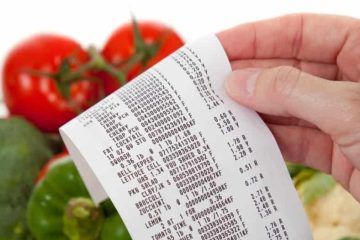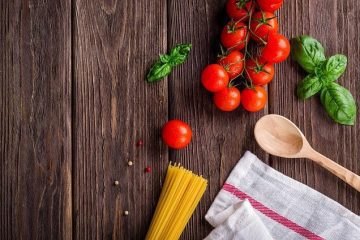Navigating the aisles of the grocery store with the intention of filling your cart with nourishing and wholesome foods while keeping an eye on your budget can sometimes feel like a challenging puzzle. However, exploring the realm of healthy food on a budget doesn’t have to be a daunting task. By curating a strategic shopping list that balances nutrition and affordability, you can unlock the door to a world where eating well and saving money go hand in hand. Join us on a journey to discover the art of crafting a budget-friendly shopping list packed with nutritious staples that will nourish both your body and your wallet.
Table of Contents
- 1. Smart Strategies for Affordable Healthy Eating
- 2. Essential Ingredients for Nutritious Yet Budget-Friendly Meals
- 3. Budget-Friendly Superfoods to Add to Your Grocery List
- 4. Practical Tips for Saving Money While Eating Well
- Q&A
- Closing Remarks


1. Smart Strategies for Affordable Healthy Eating
Eating healthy doesn’t have to break the bank! By being a savvy shopper and making smart choices, you can nourish your body with wholesome foods while staying on a budget. Here is a list of wallet-friendly items to add to your grocery cart on your next shopping trip:
- Whole Grains: Stock up on brown rice, whole wheat pasta, and oats for fiber-rich and filling meal bases.
- Legumes: Beans, lentils, and chickpeas are affordable sources of plant-based protein and can be used in soups, salads, and stews.
- Frozen Vegetables: Opt for frozen veggies like broccoli, spinach, and mixed vegetables to cut down on waste and always have nutritious options on hand.
- Canned Tuna: A versatile protein source that can be added to salads, sandwiches, or pasta dishes for a boost of omega-3 fatty acids.
Make your grocery trip a breeze by planning your meals ahead and sticking to your list. Consider buying store brands, comparing prices per unit, and using coupons to maximize savings without compromising on quality. With a little creativity and these budget-friendly staples, you can enjoy nutritious meals without overspending. Eating healthy should be accessible to everyone, and with a bit of planning, it’s within reach!


2. Essential Ingredients for Nutritious Yet Budget-Friendly Meals
When creating nutritious and budget-friendly meals, it’s crucial to stock up on key ingredients that offer both health benefits and cost-effectiveness. By incorporating versatile staples into your shopping list, you can whip up delicious and nourishing dishes without breaking the bank.
Consider including **legumes** like lentils and chickpeas, which are rich in protein and fiber, making them excellent meat alternatives. **Leafy greens** such as spinach and kale pack a nutritional punch without costing a fortune. Additionally, **whole grains** like brown rice and quinoa are not only affordable but also provide essential vitamins and minerals for a well-rounded diet.


3. Budget-Friendly Superfoods to Add to Your Grocery List
When it comes to eating healthy on a budget, incorporating superfoods into your grocery list can provide a nutrient-rich boost without breaking the bank. Here are some budget-friendly superfoods that you can easily include in your shopping list to enhance your overall well-being:
- Quinoa: Packed with protein, fiber, and essential nutrients, quinoa is a versatile superfood that can be used in salads, bowls, or as a side dish.
- Sweet Potatoes: Rich in vitamins and antioxidants, sweet potatoes are a delicious and budget-friendly option to add to your meals for a dose of goodness.
- Spinach: This leafy green is a nutritional powerhouse, offering vitamins, minerals, and antioxidants to support your health.
By making these affordable superfoods a staple in your grocery list, you can elevate the nutritional value of your meals without compromising on taste or budget. Incorporating these nutrient-dense options can help you stay on track with your health goals while keeping your wallet happy.


4. Practical Tips for Saving Money While Eating Well
In today’s fast-paced world, it can be challenging to strike a balance between healthy eating and sticking to a budget. However, with a little planning and creativity, you can enjoy nutritious meals without breaking the bank. Here are some practical tips to help you save money while still eating well:
- Shop seasonal produce: Seasonal fruits and vegetables are not only fresher but also more affordable. Incorporating seasonal produce into your meals can add variety and nutrients without straining your wallet.
- Buy in bulk: Consider purchasing staple items like grains, legumes, and nuts in bulk. This can often lead to significant savings in the long run. Additionally, buying non-perishable items in bulk can help reduce waste and ensure you always have essential ingredients on hand.
When creating your “healthy food on a budget shopping list,” look for versatile ingredients that can be used in multiple dishes. Opt for whole foods like brown rice, quinoa, and lentils that provide both nutritional value and culinary flexibility. By incorporating these cost-effective staples into your meal planning, you can create delicious and nutritious dishes without overspending. Remember, being mindful of your choices and shopping strategically can make a significant difference in your quest for both health and savings.
Q&A
Q: How can I eat healthy on a budget?
A: Eating healthy on a budget is definitely achievable with some smart planning and choices. Consider stocking up on affordable staples like beans, lentils, and whole grains, which are nutritious and wallet-friendly.
Q: What are some budget-friendly healthy snacks?
A: Opt for inexpensive snacks like fresh fruits, vegetables, yogurt, or homemade trail mix made with nuts and seeds. These options are not only nutritious but also easy on the wallet.
Q: How can I save money on produce?
A: To save on produce, buy in-season fruits and vegetables, which are usually cheaper and more flavorful. Additionally, consider shopping at local farmers’ markets or buying frozen fruits and vegetables, which can be just as nutritious as fresh produce.
Q: Are there affordable sources of protein for a healthy diet?
A: Absolutely! Affordable protein sources include canned tuna, eggs, tofu, and chicken thighs. These options are both budget-friendly and packed with essential nutrients.
Q: Can you suggest some inexpensive healthy meal ideas?
A: Try meals like vegetable stir-fry with brown rice, lentil soup, or pasta with marinara sauce and a side of steamed vegetables. These meals are not only affordable but also nutritious and satisfying.
Q: Any tips for grocery shopping on a budget?
A: Plan your meals ahead of time, make a list, and stick to it to avoid impulse purchases. Look for sales, buy in bulk when possible, and consider generic brands to save money without compromising on quality. By being mindful and strategic, you can eat healthily without breaking the bank.
Closing Remarks
As you embark on your journey to prioritize health without breaking the bank, remember that nourishing your body shouldn’t cost a fortune. By arming yourself with the right knowledge and a well-thought-out shopping list, you can savor the flavors of wholesome meals while staying within your budget. So, next time you hit the grocery store, let your list be your guide to a healthier and wallet-friendly lifestyle. Here’s to making smart choices for your well-being and your wallet – happy, healthy eating!




0 Comments